What does Bauer Media need to do to become a real force again?
In the wake of Nick Chan's appointment as Bauer Media CEO we revisit a piece looking at the future of Bauer Media.
With Bauer Media closing titles and struggling to find relevance in the digital landscape, Mumbrella’s Miranda Ward looks at how things got to this point, and what a new CEO needs to do to fix the company's fortunes.
Australia’s largest magazine publisher, Bauer Media, will look back at 2015 as something of an annus horribilis. In the past 12 months it lost a CEO, the editor of its most high-profile publication, its sales director, and closed three major masthead magazines, while its digital strategy failed to get off the ground.
The company’s issues boil down to three core problems – bad management, no coherent digital strategy and no real budget for content.
Fundamentally Bauer has failed to transform itself from a legacy print publisher to a digital media company. Insiders say the digital strategy came to a “screeching halt” under former CEO David Goodchild, while budget cuts have also diluted the quality of some of its flagship print products, as more and more international content crept in.

The closure of icon, Cleo, proves no title is safe as Bauer looks to reinvent itself. But how much of its rich history does Bauer need to shed to move forward?
The history
Bauer Media’s Australian history dates back to 1936 when Consolidated Press was formed, combining ownership of The Daily Telegraph and Frank Packer’s Australian Women’s Weekly. It rebranded as Australian Consolidated Press in 1957 and acquired The Bulletin in 1960.
In 1972 ACP founded Cleo – with Ita Buttrose at the helm – and sold off The Daily Telegraph. The publishing company also took over Publishers Holdings, claiming Australian House & Garden and Wheels in the process. In 1974, the formidable Kerry Packer took over the business and in the late ’80s the company acquired Fairfax’s magazines, including Woman’s Day, People, Dolly and Good Housekeeping.
The early ’90s saw ACP merge with the Nine Network to form Publishing and Broadcasting Limited (later known as PBL Media), with Nine handling ACP’s digital assets.
In 2012, Nine parted with ACP Magazines in exchange for $525m. A month later the company was rebranded as Bauer Media Group – the Germans had officially taken over.
At the time analysts were divided over whether the price represented a “fire sale bargain” or a “clever deal” by Nine.
Mark Day, a former Playboy editor for ACP and at the time a media columnist for The Australian, told the ABC: “I would imagine it would be Bauer’s intention to continue to publish them [the big titles], and maybe you’ll see the introduction of some of their other, more profitable titles from overseas.”
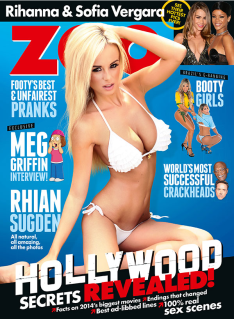 But since the change of ownership, Madison, Grazia, lads’ mag Zoo Weekly, Top Gear and most-recently Cleo have all been shut down.
But since the change of ownership, Madison, Grazia, lads’ mag Zoo Weekly, Top Gear and most-recently Cleo have all been shut down.
Women’s Fitness was on the chopping block but was saved at the last minute by Citrus Media which bought the title under license from UK-based Dennis Publishing. Last August Citrus Media also bought Australian Motorcycle News, Australasian Dirt Bike and Motorcyle Trader.
Buying ACP and expanding into Australia – a market 24 hours away – was probably more of a shock than expected for the Bauer Family.
“A business that had stepped out of Germany to go into the UK and the US and had been pretty tight in those two places for 30-odd years, suddenly thought it could conquer the world,” an industry insider told Mumbrella.
“This is a family-owned business based in Hamburg and the man who built the business, Heinz Bauer, ran it for the best part of 40 years, (and) handed it over to his daughter, Yvonne, who’s in her 30s. If you didn’t know anything else, one of the things you might surmise is that complete change of direction was the new generation acting on its own instincts.
“The other thing that has changed tremendously at Bauer – there was a time (when) the business’s only international points were in London and New York. It was a time when policy and strategy for the whole business was conducted over the lunch table on Sundays, in Hamburg, and then one of the daughters would be despatched to London or New York to hand down the latest decision.
“You can imagine it’s rather more difficult when Sydney is 24 hours away,” the source added.
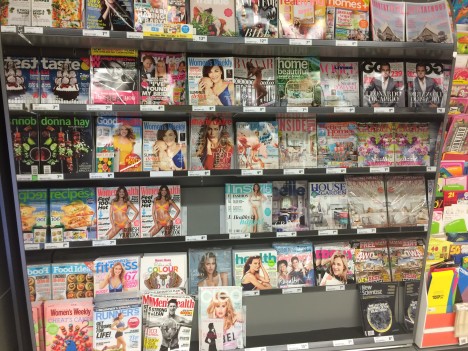 The source said Bauer’s understanding of the magazine industry was based on what it already knew – that magazines generated revenue from their cover price as opposed to the ads within.
The source said Bauer’s understanding of the magazine industry was based on what it already knew – that magazines generated revenue from their cover price as opposed to the ads within.
“They completely misjudged the trends in the magazine market. Because they had been in the magazine market for a long time, they were in different kinds of magazines. They simply didn’t know what was already happening in the magazine market when they shelled out for EMAP and ACP one after another.
“They underestimated what was going to happen in Australia and they didn’t even think how difficult it would be to manage a business through a tough time so far from home.”
Bauer bought into the local market when it was beginning to struggle – digital had arrived but no one knew what to do with it, print circulations were dropping and advertising spend was shrinking.
Australia’s magazine market is very different to the US and to Europe in that with a smaller population magazine titles are very reliant on advertiser revenue rather than cover price revenue.
Standard Media Index figures for Bauer show media agency spending has been on a downward trajectory for the past eight years.
They show ad spend from media agencies – which doesn’t include any direct advertising revenue – has dropped by almost 70% since 2007, when Bauer took over it was almost $200m. Last year it only bought in $57.5m.
“Clearly they were buying a business that was coming off the boil there, partly because of market and partly because it had been maxed out; there hadn’t been a lot of investment under private equity ownership. They were buying a business vulnerable to the kind of disappointment you’re seeing now,” an industry insider said.
The CEO vacancy
The departure of Matthew Stanton in October 2014 came as a surprise and left the business in a challenging position. Stanton had been with Bauer since August 2008 when he joined as chief operating and finance officer. He was then promoted to CEO in January 2012.
Stanton also understood the need to have a profile in market – talking to media and keeping in touch with advertisers and agencies alike. But in late 2014 he announced he was leaving for a new role with Woolworths.
It’s been a complete clusterfuck since Matt Stanton left,” an industry observer commented.
His replacement, David Goodchild, was parachuted in from Bauer’s UK operations, but a Bauer insider described him as “old school print down to his boot laces”.
In a letter to staff, global CEO Yvonne Bauer said it was time to have “the best person at the helm” to take on the challenges of market.
In the letter Bauer acknowledged it had been a tumultuous period for the market in light of the global financial crisis and the digital revolution that was quickly killing the print industry. She emphasised the need to have the “best person at the helm” to take on the challenges in market.
According to Bauer, this was Goodchild. However he lasted just one year in the role, stepping down from the position at the end of last year. Described by a few people as “The David Brent of Park Street” (a reference to Ricky Gervais’ character from The Office), Goodchild had little understanding of the intricacies of the local market, according to Bauer insiders.
“If you hire a German who sits in his office, isn’t familiar with the agencies, doesn’t go and press the flesh and talk to journalists and tell the story – there’s a natural gravitational pull away from you,” they said.
Digital disasters
Under Goodchild, the company’s digital strategic direction not only stagnated, it came to a “screeching halt”, a Bauer insider said.
However the company’s digital problems started well before Goodchild’s arrival.
During the ACP years, the company’s digital strategy was tied up with Nine Entertainment Co.
Ninemsn managed the digital assets for the publishing house’s mastheads as part of a joint venture.The partnership meant digital sales were handled by Nine’s commercial team rather than by ACP’s sales team.
Clearly they have strong brands and the future is in digital. There is no future for them if they don’t nail their digital strategy,” an industry insider said.
“The historical issue there – the reason they’re in such bad shape – is when Packer did the deals for Ninemsn, he gave the digital rights to Ninemsn. The ACP titles, the digital rights were owned by Ninemsn.
“There just wasn’t any passion in Ninemsn for the magazine brands the same way there was for the overall Ninemsn brand.”
Once Bauer had bought ACP Magazines it had to then work through the Ninemsn digital arrangements. In April last year Bauer took over full trading responsibilities for its entire digital inventory. This meant Bauer was building a new digital strategy from scratch.
“Now they have those back, is it too late? Did they wait too long? Can they create some relevance? It’s going to be a challenge,” mused an industry insider.
Its first move was designed to coincide with the launch of the ‘To Love’ digital women’s network.
 However, in February, Bauer Media had decided to separate its print and digital businesses, creating Bauer Xcel to manage its digital properties.
However, in February, Bauer Media had decided to separate its print and digital businesses, creating Bauer Xcel to manage its digital properties.
“They’ve been really slow into digital. In the last year they’ve announced this centralised structure called Xcel. Two years ago that was late, they started a year ago, that’s surely late.
“It’s something all media companies need to be across – there is no alternative,” an industry commentator said.
“The difficulty for traditional media companies, particularly those in print, the most difficult competitive decision to make in expanding in digital (is) usually if you can afford to compete with yourself.
“You’re competing with digital-only services who don’t have to worry about protecting an existing business which you, as a traditional business, do have. That isn’t easy.”
The separation of the print and digital businesses meant that publishers in charge of magazines no longer oversaw the digital strategy of their product.
Marina Go is the rare exception to this, as the bridge connecting the joint-venture between Hearst and Bauer Media.
As general manager of Hearst-Bauer, Go has a multi-platform brand portfolio including Harper’s Bazaar, Elle and Cosmopolitan.
However, the separation of the print and digital businesses is a strategic decision that means print publishers aren’t responsible for digital, creating a disconnect between the online and the print teams for a masthead.
For a few months, online editors couldn’t even get into editorial meetings,” a source said.
In August Bauer launched its ‘To Love’ digital platform with the launch of Food to Love.
It was a strategy informed by external consultants, but as one Bauer insider said “we got what most people get out of consultants”.
“There’s been some pretty bad strategic decisions. You can’t deny the ‘To Love’ platform has been a disappointment,” said the insider.
“It hasn’t made the splash management had hoped. That doesn’t help the confidence of management, who are old school print types, to increase their desire to want to invest in digital.”
 Food To Love launched in April and was followed by Homes to Love in September. The planned Family to Love and Health to Love portals still haven’t launched, despite being touted for the second quarter of 2015.
Food To Love launched in April and was followed by Homes to Love in September. The planned Family to Love and Health to Love portals still haven’t launched, despite being touted for the second quarter of 2015.
It is thought that these sites are finally set to launch this year.
Sources say the Bauer Xcel’s headcount grew “massively and quickly” to manage the To Love network.
“They overspent and over-hired on the To Love network,” a source said.
On the company’s digital future an industry insider is not confident Bauer can recover.
“Being late to the party in digital makes it challenging-to-terminal,” they said.
It’s not a fair and natural assumption to say powerful brands in a print environment are going to be the winners online.”
However, for Bauer Xcel a digital overhaul of Bauer’s flagship brands, Woman’s Day and The Australian Women’s Weekly, was on the agenda. The new sites were launched in April, with the Weekly’s new website featuring a video push.
Editor-in-chief, Helen McCabe, hosted a weekly video segment ‘Let’s Talk’ produced in collaboration with Brand New Media. The segment saw McCabe interview pairs of “interesting women”.
“You had to just let it fail, it was just such a bad idea and it was flying face in market data,” an inside source said.
Video can be a good strategy for a publisher online; it is highly searchable with both Google and Facebook algorithms prioritising video content and driving time on-site to help audiences better engage with a brand; however, the video interviews petered off, with the last ‘Let’s Talk’ video interview dated April 29.
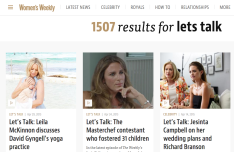 Worse still: the relaunch hasn’t exactly resulted in the Weekly’s average unique browsers skyrocketing.
Worse still: the relaunch hasn’t exactly resulted in the Weekly’s average unique browsers skyrocketing.
Last December, an average of 19,352 unique browsers visited AWW.com.au. But in December 2014 an average of 28,161 unique browsers visit the site.
In March last year, the month before the new website was unveiled, the site had 25,626 unique browsers. In April, when the new site was unveiled, 22,957 unique browsers visited the revamped AWW.com.au – that is a drop of 10.4% on March.
Women’s Day unique browsers are not audited, however, its digital paid subscribers are. For the July to September period they were 2,447 – up 8.5% on the subscribers for the same period in 2014.
The Women’s Weekly also audits its digital paid subscribers – looking at the same period it was 17.5% down on 2014. For the July to September period the magazine had 7,055 paid digital subscribers compared with the 8,554 it had during that time in 2014.
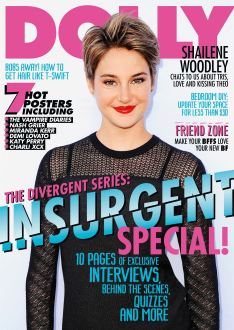 Looking to the future, the refocus of Dolly as a “digital-first property” will be an attempt to revitalise the digital strategy currently in place. But is it too little too late?
Looking to the future, the refocus of Dolly as a “digital-first property” will be an attempt to revitalise the digital strategy currently in place. But is it too little too late?
In an internal note to staff announcing the changes to Dolly and confirming the closure of Cleo, interim CEO Andreas Schoo, said: “The year ahead will no doubt have its challenges, however there’s much to look forward to at Bauer Media in 2016 as we build upon the ‘To Love’ digital women’s network that launched in 2015, and expand our 360-degree approach to content publishing.”
The focus on the young women’s segment to further push Bauer’s digital strategy makes sense. The millennial age group is more interested in apps and content they can view or read on their phone than regularly buying a print magazine.
But Bauer is falling behind.
With no mention of an off-platform distribution strategy it’s clear Bauer remains focused on itself as opposed to really thinking about what the consumer wants.
And what the consumer wants is content where they are – Facebook, Snapchat and even Apple News.
Many publishers are already experimenting with distributing and monetising content directly through these platforms.
While Cosmo is already on Snapchat, Bauer needs to seriously consider this for other young women’s titles. Furthermore, Bauer Media needs to be open about where these platforms fit into their wider strategy and what it will mean for audiences and for advertisers.
Bauer Media also needs to consider NewsLifeMedia’s news.com.au digital strategy – that is having a website that is not matched to any of the mastheads.
An industry insider said the company’s current strategy is to be a “second tier” player, like a Mamamia, and reach a niche audience “rather than being a news.com.au and becoming a big reach player”.
“Ultimately they’re going to have to make that separate type of play,” the insider argued.
The closure of Cleo
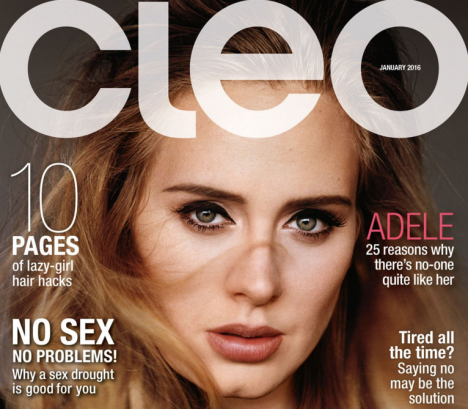 According to the latest Audit Bureau of Circulation figures, Cleo magazine had a circulation of 42,212. The magazine’s direct rival, Pacific Magazines’ Girlfriend shifted on average 37,541 copies a month during the same January to June period last year.
According to the latest Audit Bureau of Circulation figures, Cleo magazine had a circulation of 42,212. The magazine’s direct rival, Pacific Magazines’ Girlfriend shifted on average 37,541 copies a month during the same January to June period last year.
Indeed, a source inside Bauer described the closure of Cleo as a “squeezing out”.
“That audience was gobbled up by Cosmo and Elle,” they said.
Rival titles, also owned by Bauer Media, were well up on Cleo, with Cosmopolitan reporting a circulation of 77,181 and Elle posting a circ of 60,139.
However, according to an industry insider, the closure of Cleo had been on the cards even in the days of ACP – well before the launch of Elle.
The magazine’s fundamental problem was Cosmopolitan which, as mentioned above, has historically had a higher circulation than rival Cleo.
What saved Cleo was that Cosmo is a joint-venture. It’s 50% owned by Hearst and 50% owned by Bauer.
“If both had been 100% owned, Cleo would have closed earlier,” the industry insider said.
“There was no financial incentive to target Cleo when you had a JV and contractual restrictions on closing Cosmo.”
The departure of Helen McCabe
Helen McCabe’s announcement that she was quitting The Australian Women’s Weekly rattled the industry. It was a shock. McCabe has helmed the country’s most influential magazine for the past six-and-a-half years. She turned a mumsy magazine into an agenda-setting title that celebrated women of all walks of life – not just celebrities.
The Guardian’s Weekly Beast reported that Bauer management “is keen to get back to the magazine’s roots in middle-class suburban life and away from the focus on news, politics and executive women that marked McCabe’s tenure”.
The Weekly Beast quoted a magazine insider as saying, “In a very pretentious way Helen tried to turn that magazine into Vanity Fair.”
Indeed, a source told Mumbrella the Weekly’s publisher, Matt Dominello, wants the Weekly to go back to its “mumsy” roots.
Bauer management will now be looking to find McCabe’s replacement – and someone cheaper will most likely be the strategy as Bauer attempts to scrape savings from every part of the company budget.
The Guardian’s Weekly Beast has suggested Kate de Brito, a former News Corp journalist who is now editing Mamamia, the former editor of Mamamia, Jamila Rizvi, and Daily Telegraph columnist and editor, Sarrah Le Marquand, could all be potential candidates for the role. Mamamia founder, Mia Freedman, has also been thrown around as a potential contender.
Andreas Schoo, interim CEO of Bauer Media, has rejected suggestions the company was set to merge the editorial teams of the Australian Women’s Weekly and Woman’s Day.
Speaking to The Australian, he said: “That’s absolutely not true. Both of these brands are really iconic brands for the Australian market, and we know this. We care for this market and there are no thoughts to bring both of these magazines under one leadership…I’ve never thought about this.”
But the question on many people’s minds is how long that will last.
Who will be the new CEO?
Attention now turns to the question of who will permanently replace Goodchild. Several names have been thrown around in market.
Nick Chan
He has almost ten years under his belt helming Pacific Magazines. He’s been in the start-up world since departing Seven West Media, where he was most recently chief operating officer after handing the Pac Mags CEO role to Peter Zavecz at the end of 2014. Chan led Pacific Magazines through the beginning of its digital transition, the important question is: would he be 100% committed to completing such a job for the second time?
Nicole Sheffield
It would be naive to assume Sheffield isn’t on Bauer’s radar for the top job. She’s been the CEO of NewsLifeMedia – News Corp’s lifestyle operation – since March 2012. She joined NewsLifeMedia from Foxtel’s LifeStyle Channels group where she was GM for four years. Sheffield also has seven years at Pacific Magazines under her belt.
During her time at Pac Mags, Sheffield was involved in the company’s early adoption of digital and has been a driver in ensuring NewsLifeMedia is a competitive player in the digital space. NewsLifeMedia has been named Consumer Publishing Company of the Year for the past two years at the Publish Awards. But News Corp likes to keep its executives close, so it could be a struggle for Bauer to lure her away.
Marina Go
Go is currently the general manager of Hearst-Bauer Media and looks after the print and digital assets for Harper’s Bazaar, Elle and Cosmopolitan. She also spent almost three years as the CEO and publishing director of Private Media, the publisher of Crikey and Women’s Agenda. She’s the chair of Wests Tigers Rugby League – no easy task in the current climate.
Go has the editorial experience and she also has an understanding of what it takes to steer a business. And she gets the digital space. She also has an appreciation for the need to marry digital and print together and could be key to helping Bauer overcome its digital problem.
Paul Dykzeul
Dykzeul fits with Bauer’s tendency to hire internally. He’s been CEO of Bauer Media NZ since 2008 and has been around the magazine traps for a while. He was the CEO of ACP Media from 1991 before moving to ACP Magazines Australia. In 2000 he joined Murdoch as managing director of publishing and in 2006 he was appointed publishing director of Pacific Magazines with responsibility for New Zealand and international licensing. He returned to Bauer Media NZ as CEO in 2008.
His knowledge of the business on his side and CEO experience make Dykzeul the leading contender if Bauer is looking to appoint from within. The New Zealand market is similar to Australia both in size and its reliance on advertising revenue.
Keith Falconer
Sticking with the internal hiring tradition, Bauer’s CEO of its Trader business in Australia and NZ is also being bandied around. He was appointed to the role in 2004 and is responsible for all the Bauer Trader business in Australia and New Zealand.
Falconer appears to be an unknown quantity. However he could be a good choice for the company given his experience in the more niche products such as Wheels, Motorcyle Trader and Trade-a-boat. The trader side of Bauer also publishes classified and directory websites such as TradeTrucks.com.au. However, this means his more generalist consumer experience could be limited.
Eugene Varricchio
Bauer’s operations director is also seen as a contender. He’s been the director of operations, sales and marketing for the past six months. Previously he was the director of operations and retail sales for just over four years. He’s been with Bauer since 2002, when it was known as ACP Magazines. Varricchio also holds a non-executive director position with the Audited Media Association of Australia, a role he’s been in since March 2013.
While he clearly knows the business, Varricchio seems to be an outside shot for the role. He’d have a clear idea of the operational difficulties of the business and the need to be more loud in market when it comes to marketing.
Sources indicate while it is hard to get an exact read on Bauer management’s thinking, it’s understood they are looking to buck tradition and hire outside of the Bauer talent pool – looking to appoint someone with previous experience in running a publishing house. Meaning Nick Chan or Nicole Sheffield could be the likely front-runners – that is, if they even want the job, of course.
Consensus suggests an external appointment is what the company needs. It needs a CEO who “hasn’t been pushed down by the Bauer machine”, an industry source said, someone who will demand autonomy.
An industry insider said it would be a “mistake” if Bauer “hired from within their own ranks”.
Private companies tend to only trust people they’ve worked with previously. It will be a mistake. This market requires a very unique touch. You have to have credibility with the creative community who produce editorial but also with the advertisers and the media buyers,” the industry insider said.
“In light of what they’ve just experienced over the past 12 months, a further external appointment will set them back enormously.”
What does a new Bauer CEO need to do?
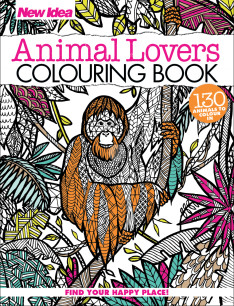 Speaking to insiders, it’s apparent the company needs to nail down its digital strategy and 100% commit to it.
Speaking to insiders, it’s apparent the company needs to nail down its digital strategy and 100% commit to it.
As mentioned, NewsLifeMedia has a large digital presence with News.com.au – the site was the number one news and current affairs site, according to Nielsen’s digital rankings, for the entirety of 2015.
Pacific Magazines is powering ahead in the e-commerce space, as well as looking at trends it can tap into – such as the adult colouring-book craze and selling wool via Better Homes and Gardens.
Industry experts suggest value remains in specialty magazines; however, the longer they leave it, the harder it could be to get into.
“Speciality magazines still work, if you’re doing a boating magazine or a wine magazine, where you have a clear affinity audience,” an industry insider said.
Bi-monthly fishing magazine Freshwater Fishing Australia, published by Australian Fishing Network, saw its circulation grow by 16.8% in the January to June period last year compared with the year before.
Of course for every positive story there are the struggling titles as well, with Just Car’s circulation down 7.4% in January to June compared with that same period in 2014.
What the new CEO needs to do is to come in and assess the business quickly, lay a roadmap down and be flexible with that. Digital needs to be on the agenda as does off-platform publishing.
The role of events and other revenue streams needs to be focused on, and creating bigger and better brands from the magazines that do exist will help as the company tries to transition from a large, legacy publisher into a more nimble, digital-first publishing company.
An industry insider placed emphasis on the new CEO’s ability to energise the talent of the teams, raise morale and push the category as a whole in market.
“You have to go out there and build confidence with the key distributors, with media buyers and key advertisers and attract and retain good people,” they said.
“Advocacy of the category. You’ve got young people who work in media agencies and they don’t read magazines. It’s always a challenge where the people who are spending money and the people who decide where it gets spent aren’t consuming your product. You need a CEO who’s prepared to go out there, fly the flag and tell the story.
“Now they’ve contracted the business by closing a lot of titles, they need to get someone in there who can energise the talent of the teams that work there, restore morale and give direction.
“Retain good people, recruit good people, get them excited and create a vision that people can buy into.”
Action is key to Bauer Media’s future success. Digital has proven it’s here to stay and the market is going to continue to move ahead with pace – Bauer needs to catch up quickly to take advantage of what remains of the shrinking magazine market.
Industry insiders speak highly of the talent within the company, what it needs now is a leader who can harness the talent and charge ahead.
“The structural changes are irreversible. They have accelerated their structural decline through mismanagement and poor decision making,” said an industry observer.
“The impacts are felt most in those areas where the profit has historically been the greatest and they haven’t, in time, created online identities that give them that clear transition, that bridging strategy.”
Bauer’s ability to adapt its business model is not just good for the company, but for the category as a whole, which needs Bauer to be healthy competition.
Magazines need to prove to advertisers, and those holding the purse strings, they are still a good investment for ad dollars. And that is why the appointment of the next Bauer Media CEO is being watched very closely by the entire industry.
- Miranda Ward is the public relations and publishing editor at Mumbrella



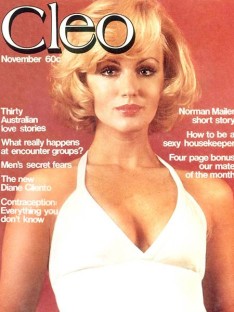


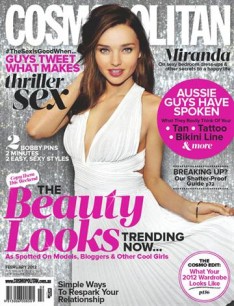
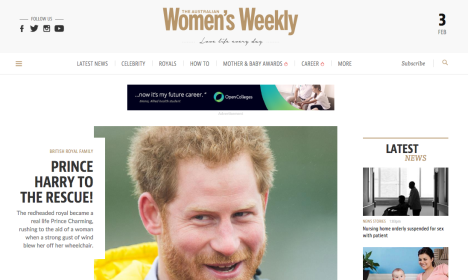
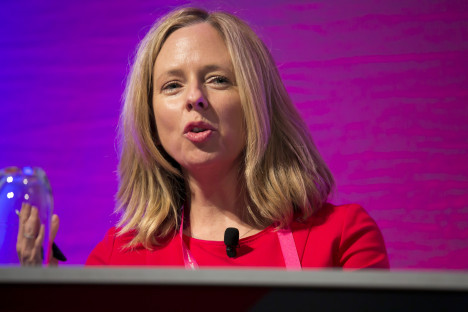

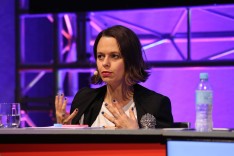

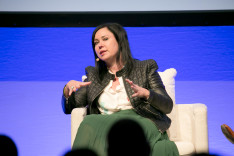
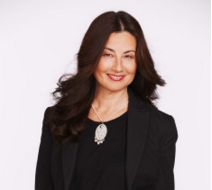



 Linkedin
Linkedin
I mean you didn’t have to be the world’s greatest business analyst, or one sacked for incompetence for that matter to know a) ACP got ripped off when they bought Emap and b) Bauer got literally bent over double buying ACP!
User ID not verified.
Its a toxic, fear based archaic culture that doesn’t innovate and value talent. Its management team – including its most senior HR leader – has not a clue about “people or culture”.
Sad but all true.
User ID not verified.
Miranda….Great insights shared in a very well written article.
If I read this article in 2007 it would have made sense where Bauer Media is currently. However, it is 2016. It is hard to believe a company of this size could be in this position. It all boils down to poor leadership that could not make big decisions 10 years ago that would have impacted revenue negatively at the point of time, but the results would have been better return in the medium (2010) to long term.
User ID not verified.
Only one company can save them, the same one that everyone’s jumping on – Flowmode.
User ID not verified.
Thanks Miranda…great overview and WOW didn’t realise it was that bad at Bauer…I wonder why their digital strategy hasn’t been more successful given they have some good people with digital in their title…perhaps they never got the full backing…also surely there are learnings etc from other Bauer territories and how successful there digital strategy has been there…all seems very odd and quite sad actually as they should be doing much better.
User ID not verified.
Are you telling me that wearing a short skirt and doing “agency runs” to drop off baskets of muffins is not, in reality a business model?
User ID not verified.
Young audiences are demanding video and shareable content. The fact that an iconic local brand like Cleo, with it’s decades-won reputation for boundary pushing content and cheeky tone, was allowed to fail without making the transition to digital, is a strategic blunder of epic scale. All the right elements existed, but obviously, not the vision. Very sad.
User ID not verified.
Hey Mumbrella/Miranda
Mid way thru reading this – had a thought – this is stupendous journalism. Researched, relevant facts that support the argument, and an excellent writing style.
AND
No typos- that I noticed. So often, for me, an otherwise excellent Mumbrella piece has been ruined by a jarring, silly, sloppy typo.
Congrats.
User ID not verified.
Doesn’t Bauer need to reanalyse their business? 3rd party publishing is getting / has been torn apart. Multi channels and even brands themselves (Bauer’s revenue) are publishing themselves. Do Red Bull need to advertise in ZOO? Have you seen Red Bull’s social channels and the engagement that they produce?
Could buyer use their publishing reach to sell their own brands? Do they need to diversify? They need to workshop this and remove any leaders that are resistant to change.
Surfstitch started out as an online surf shop. They now own publishing channels and products that surfers buy. They were able to move fast and have done very well.
Could Bauer utilise their reach to build their own product brands? Again though; they need a purpose.
3rd party publishing, on it’s own, is dead.
User ID not verified.
In the film industry the mantra and accepted wisdom is that ‘nobody knows anything’. Looks like it’s the same for the publishing industry.
User ID not verified.
Agree with @Whatif. How does a media company not have a digital strategy in 2016? ACP, then Bauer, have had their heads in the sand for so long. Not in the least surprised they’re in the shit now.
User ID not verified.
You cannot separate print and digital.
Their most valuable asset is their brands.
Their new business model should be affiliate marketing e.g. readers click through and buy products showcased by their brands – fashion, furniture, food etc.
They should look to creditcardfinder, iselect and realestate.com.au for inspiration.
User ID not verified.
Yvonne Bauer’s father is Heinz – not Hans – Bauer. Why is an insider calling David Goodchild a German. He is English.
User ID not verified.
Nice article. I worked at ACP in the 90’s, great days indeed. If you submitted an ad booking from a client that had money outstanding, it would be sent back from accounts stamped “Rejected”. Then you’d take it to Nick Chan and you’d get about 10 seconds to try and convince him that the advertiser would pay and that we should accept another booking. If he agreed he’d sign it, and the ad would run. He signed them just about every time, but he’d say “Get them to pay, otherwise I’ll come and see you”
User ID not verified.
Thanks Megazord,
You are very much right – Hans has been corrected to Heinz. German is also the colloquial term used by people in the business for people from the international Bauer stable.
Cheers,
Miranda – Mumbrella
Good and thorough article, and very interesting. Did spot one small typo … but in the scheme of things barely worth mentioning 🙂
“The role of events and other revenue streams needs to be focused on, and creating bigger and better brands from the magazine’s that do exist”
User ID not verified.
Thanks Anne – that’s been fixed.
Cheers,
Miranda – Mumbrella
Ouch! I’ve worked closely with Bauer over the years and agree, the lack of leadership from a strong CEO and cutting of budgets has had a major impact on the business success. That place has some of the best people in the business from Content to Digital – and as per your recent updates over last week or two it’s very clear that all the top talent is walking out of the door.
User ID not verified.
Not sure it is Miranda. They did call Bauer publisher Sebastian Kadas a German even though he is an ethnic Hungarian from Romania because he worked in Germany. Goodchild is very English, hence the David Brent tag.
User ID not verified.
It is so good to experience this quality investigative journalism. When it come to the future success of our magazines and websites its all about content like this. Congratulations Miranda you have done the B2B magazine industry proud.
User ID not verified.
Great article and well written. Very insightful.
There was a stand out typo though – Woman’s Day not Women’s Day.
User ID not verified.
Oz Bauer insiders refer to the rest of the conglomerate as the Germans.
And yes staff have dropped like Morteined flies–no sooner is a digital person employed they are gone. Perhaps its because they get a sniff of how frustrating their task is working for an organisation with an inflated image but who are so seriously out of touch and behind in every way—technical,systemic,legal and moral. And then there’s the poor pay.
Staff in general are treated like commodities and dispensable and there is a culture of ‘you should feel privileged to even be working’. It is a message delivered down by all those old-school dead wood door knobs who bluff their way through meetings and disguise their overwhelm with talks about digital and operational progress by using just such a strategy-keeping you small, limited and in your box.
Bauer have been unwilling to supply their technical teams with the resources they need—, they have limited experts in the modern world of technology—so they buck-pass, stall ideas, and miss small common-day opportunities. They operate by employing overly aggressive tactics enforced by people with neither the skill to manage or the expertise to direct. [Edited under Mumbrella’s moderation policy]. Bauer are not behind the 8-ball. They are the 8-ball. And just like Hitler, smiling assassins always end up destroying themselves in the end.
And now that this article is spreading, more and more will exit stage left. It’s the inevitable demise of a ridiculously run outfit—flagged by incompetents.
If the reigns are handed to [Edited under Mumbrella’s moderation policy], what is left of Bauer Oz will no doubt be destroyed in 12 months.
User ID not verified.
Very interesting read especially on the CEO contenders but some facts aren’t all there. Namely the fact that Nine sold ACP to CVC a couple of years before Bauer bought it (for billions) and the holding pattern of being with a hedge fund for 3 years and not an invested publisher put the magazines on the back foot and in denial that the digital age was coming for them. Not sure who would take on Bauer at this point, it’s sadly a hot mess.
User ID not verified.
Packer didn’t sell ACP to Bauer, it was sold to ptivate equity firm cv can first and then 2 years later sold to Bauer.
User ID not verified.
#22, wow, they must have really done a number on you!
User ID not verified.
I rarely see anybody younger than fifty when visiting my newsagent. The magazines are almost hidden away and most customers seem to be transacting lottery or bus purchases.
User ID not verified.
Great piece — and right on the money. I think it may be too late for Bauer. In print –a category they once dominated – their brands are becoming less and less relevant to both readers and advertisers. And in digital, their brands have never made any real impact (due to lack of investment, strategy, knowhow). Too late to claw that back methinks. Too many strong — and in most cases digital-only – lifestyle brands now dominate digital.
User ID not verified.
Well done on Adam (21) for pointing out the Woman’s Day typo. A shame he couldn’t proof-read the management team copy on Bauer’s website. Under publisher Matt Dominello, it lists one of his publications as “The Australian Woman’s Weekly”
User ID not verified.
Take there car magazines
They don’t see that they have these Magazines which are great portals of research and development. they don’t understand video content and see it as a spend, when in actual fact if they opened up their eyes got the best content makers and started moving into TV and other spaces with their brands they could become like Roadkill in the US. What do they do? Nothing..
User ID not verified.
Interesting that Matt Stanton gets such a good rap in this piece. As a “Bauer insider” I watched him act as point man for the Germans and spearhead a raft of dubious decisions (getting rid of prepress – since reinstated; buying an extremely average production program – Woodwing; outsourced IT to India; got rid of several publishers who have now formed a company that has nabbed a couple of former Bauer big clients – Qantas/Coles/Foxtel). He introduced managerial mantras such as “nimble” and “agile” and reassured us that no-one’s jobs were at risk.
My sympathies lie with Woolworths
User ID not verified.
Buy Yahoo
User ID not verified.
Myriad – unfortunately some newsagents are not retailers and are not progressing with the changing economy. My store gets a broad demographic and a high and growing percentage under the age of 20. This is because I have a store that is relevant to different age groups. The days of sitting on your hands and watching customers stream in is over, as a retailer we have to work hard to make our shop a desirable experience. Traditional products still have their place but they need to interconnect with new products if they are going to work in my store.
As for Bauer-as a retailer I have seen a change over the last 10 years away from Bauer (ACP) titles. They are not relevant anymore and Bauer have not been aggressive in changing. I want to focus on titles that are growing and that will also change the attitude customers have of my store. Growth titles like Frankie, Yen and Womankind plus niche titles are my focus now. Why would I promote magazines that are readily available in supermarkets, petrol stations etc normally at discounted prices.
User ID not verified.